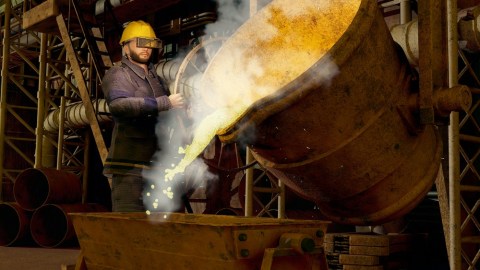Heat Your Home With a Data Furnace

While there are many ways to heat your home during the winter months, here’s one you probably haven’t thought of yet: using heat generated by computer servers. In a conceptual computer science paper that has already started to generate attention both within the scientific press and mainstream media, a group of researchers from Microsoft and the University of Virginia explain how “data furnaces” could be used to heat individual homes. At its core, the concept of the data furnace is both profoundly simple and remarkably innovative: Take all the excess heat generated by the world’s data centers and server farms and convert that into a heating resource for homes and office buildings.
It’s a classic example of being able to transform waste into energy. Consider for a moment the growing size of the world’s data centers and the number of servers needed to keep up with all the data being moved to the ckoud. In some parts of America, vast data centers holding hundreds of thousands of servers are generating heat right now as they crunch through all the information being generated in the cloud. So much heat, in fact, that they have been specifically re-located to cooler climates where it is easier (and cheaper) to dissipate all the energy they are creating. In New York City alone, there are 50 different municipal data centers for storing government data – not to mention all the data centers in hollowed-out buildings used by corporate clients. (Unlike typical rent-subsidized tenants, servers don’t ask for much in the way of improvements and maintenance – they just sit there… serving)
For the data furnace concept to take off, though, it needs to be supported by an economic model that makes sense. As Randall Stross explains in the New York Times, a quick back-of-the-envelope calculation shows that installing personal data furnaces in individual homes might actually make sense from an economic perspective – not just from a touchy-feeling environmental perspective:
“A conventional data center must invest about $400 a year to run each server, or about $16,000 for a cabinet filled with 40 of them. (This includes the costs of building a bricks-and-mortar center and of cooling the machines.) Having homes host the machines could reduce the need for a company to build new data centers. And the company’s cost to operate the same cabinet in a home would be less than $3,600 a year — and leave a smaller carbon footprint, too. The company’s data center could thus cover the homeowner’s electricity costs for the servers and still come out way ahead financially.”
While the authors of the research paper propose that data furnaces start off in the home, it’s more likely that they will start off first in larger apartment buildings or corporate office buildings. Instead of seeing boilers and coolers and pipes the next time you troop down to the basement of your building, you soon may see little glowing servers in the corner, giving off heat, while crunching all the 1’s and 0’s on the Interwebs.
And, make no mistake about it, the individual data furnace will keep you warm: “In the coldest climate, about 110 motherboards could keep a home as toasty as a conventional furnace does. The rest of the year, the servers would still run, but the heat generated would be vented to the outside, as harmless as a clothes dryer’s.” The more that the world relies on Big Data and massive computing ability to solve sophisticated problems and the more data that we create and then move to the cloud, the more likely it is that the data furnace concept will take off. At a time when it’s possible to construct buildings that are net-zero and entire cities that are net-positive, the data furnace concept is just another amazing example of what we can do to save the environment when we put our collective heads together.
Image: Interior of the Plant / Shutterstock





